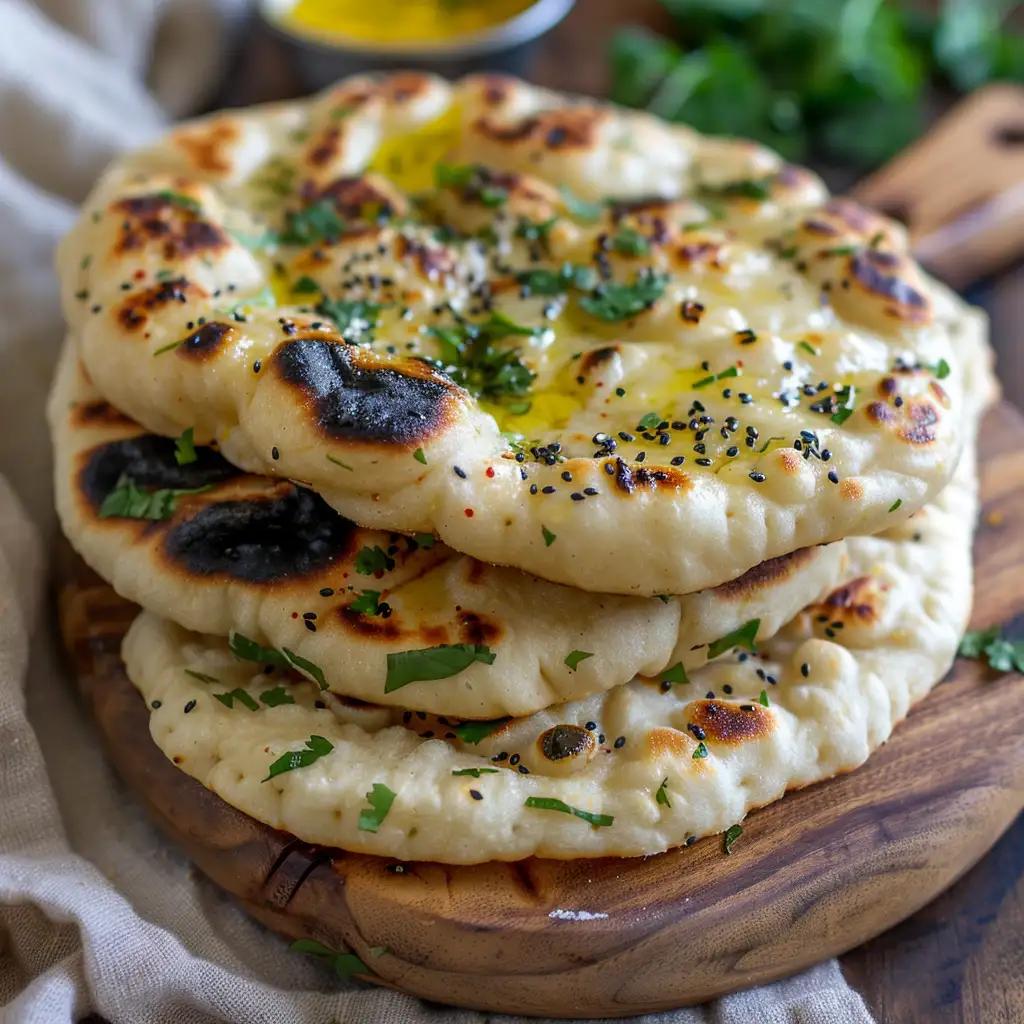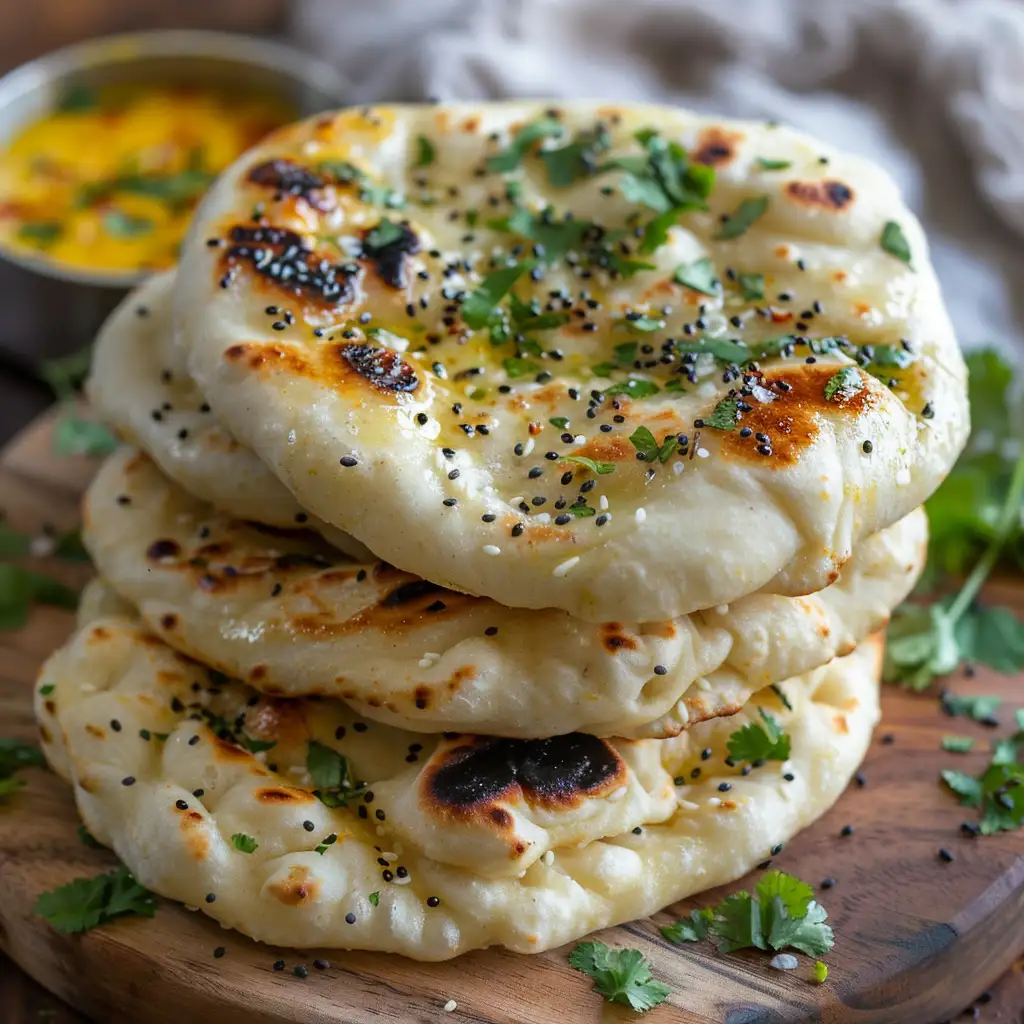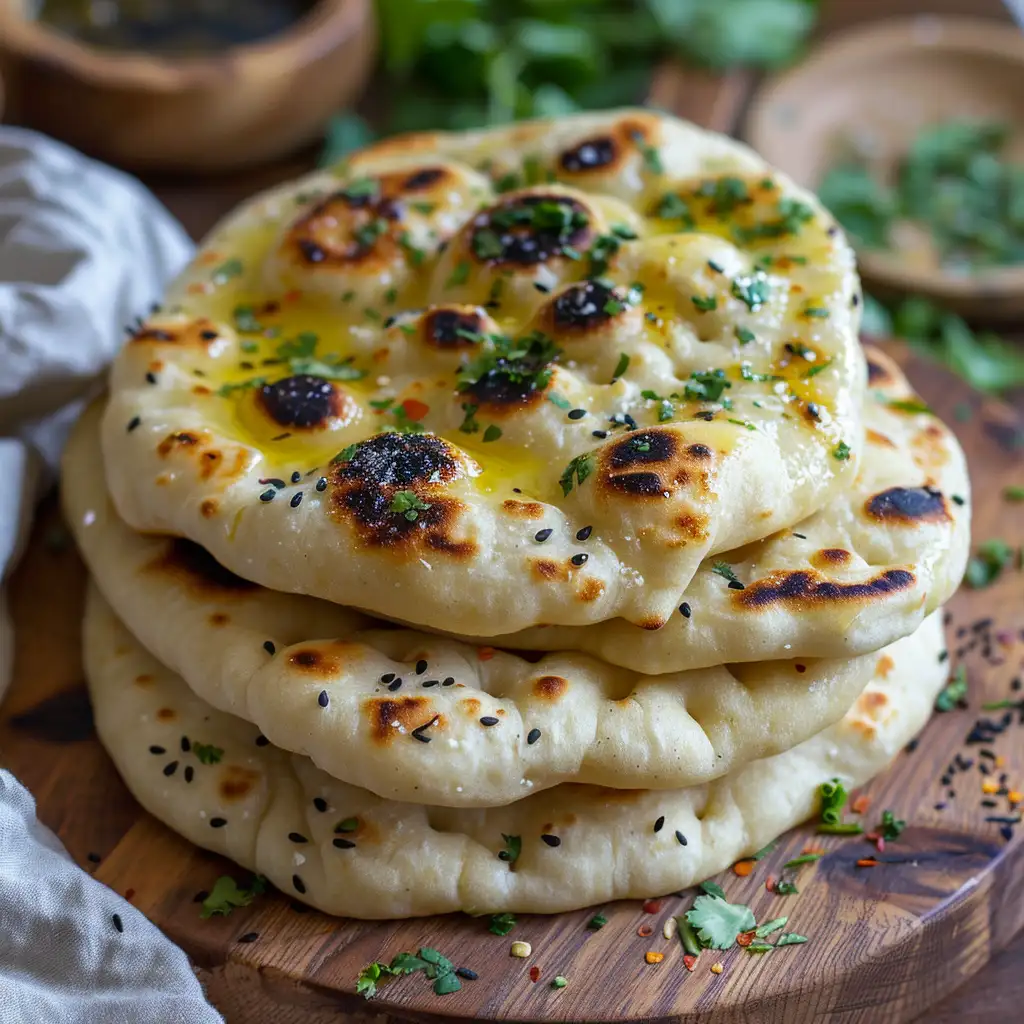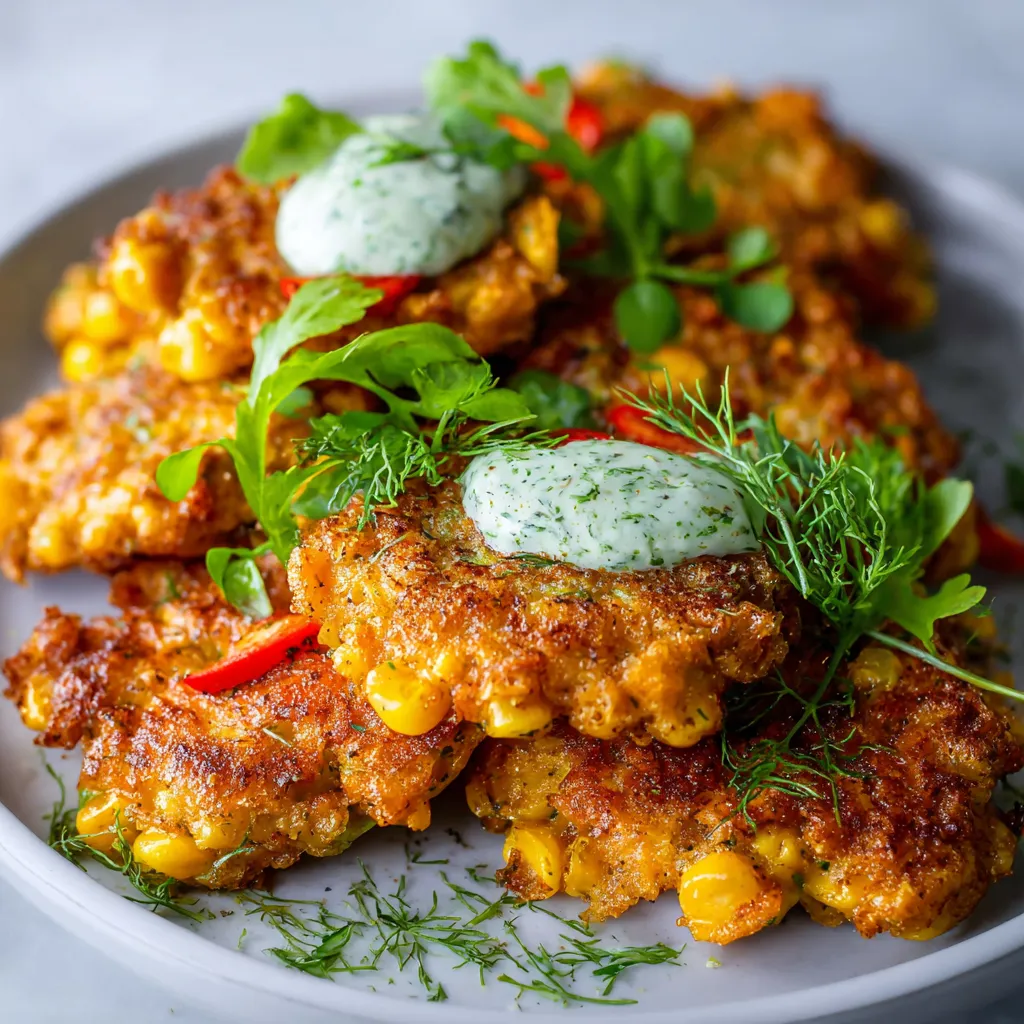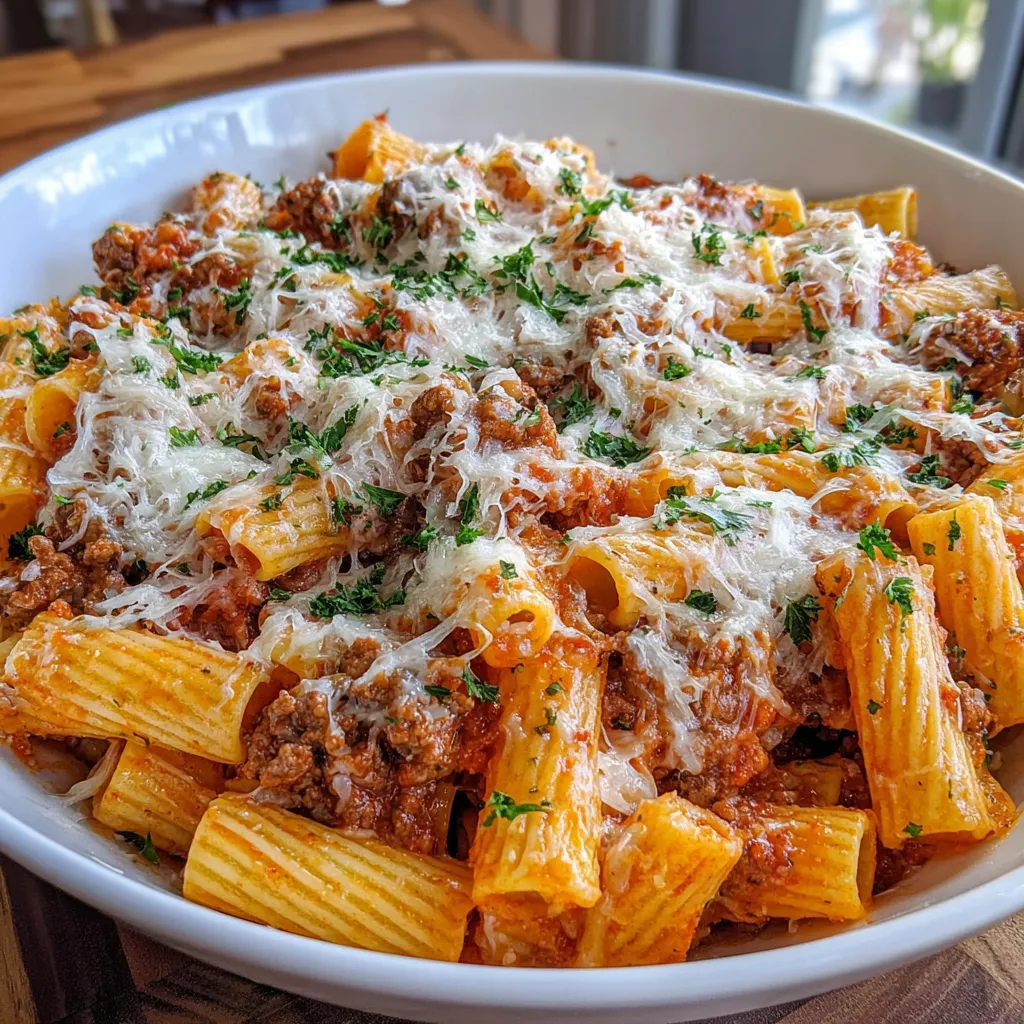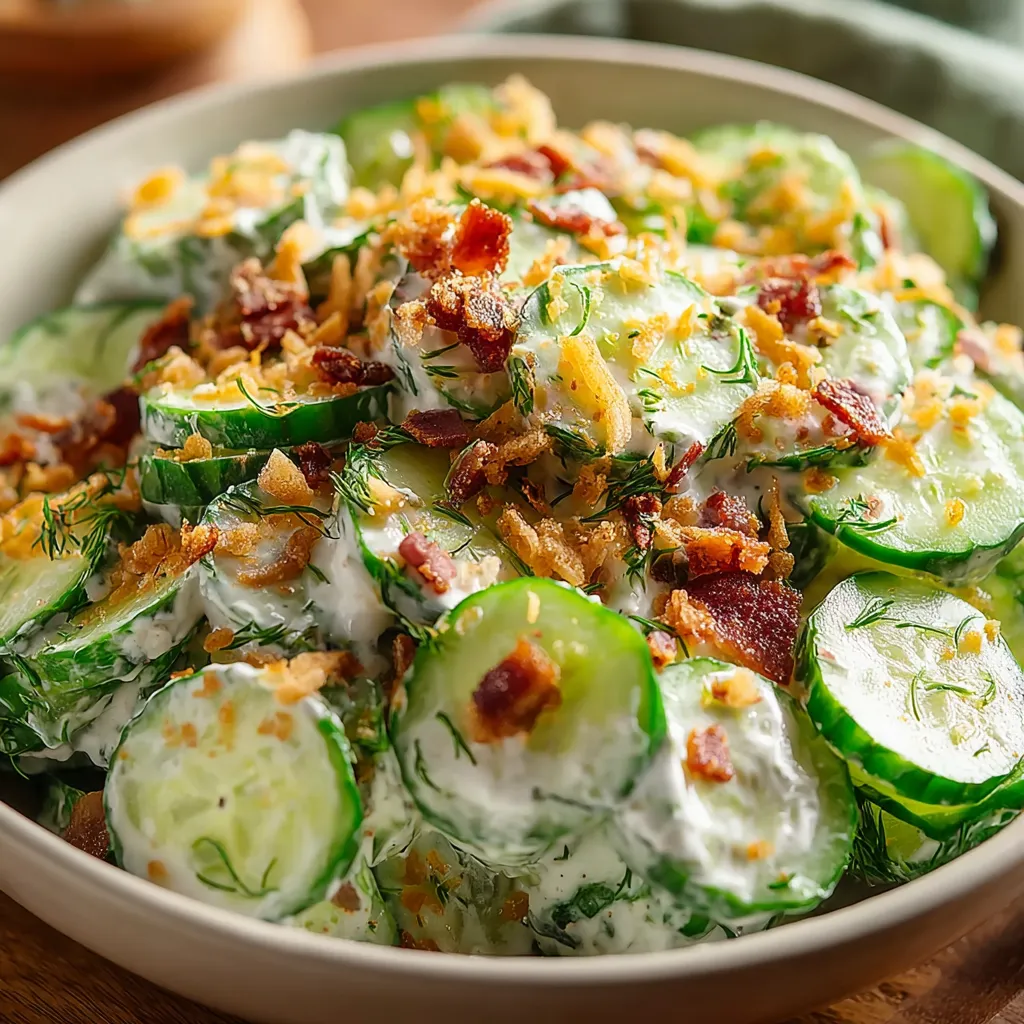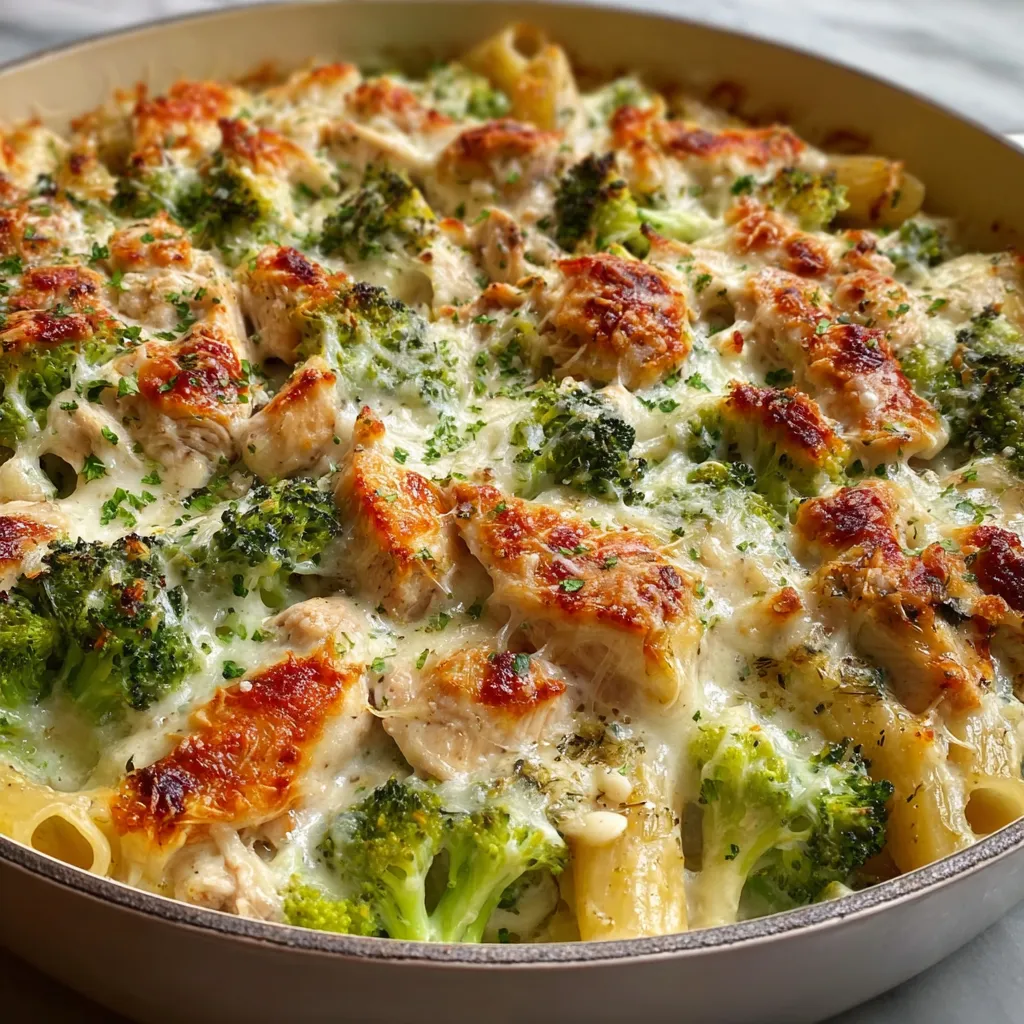Introduction to Naan Bread
Introduction to Naan
Naan is a type of leavened bread that originates from the Indian subcontinent. Traditionally baked in a clay oven known as a tandoor, this bread is beloved for its soft texture and distinctive charred flavor. It’s an integral part of many meals, serving as a perfect complement to various curries and grilled meats. The key ingredients in naan include flour, yeast, milk, and often ghee or butter, which contribute to its tender crumb and rich flavor. The process of making naan can vary, but typically involves mixing, kneading, rising, and finally cooking at high temperatures.
Brief History of Naan
The history of naan can be traced back to ancient India, where it was a staple in the royal kitchens of the Mughal Empire. Historical records suggest that naan was enjoyed by the royals during their lavish feasts, reflecting its status as a luxurious item. Over time, the recipe spread across Asia and the Middle East, each region adding its own local flavors and techniques. In Persian, ‘naan’ simply means bread, indicating the fundamental role it played in everyday diets. Today, naan has gained international popularity, appearing in the menus of Indian restaurants worldwide. To understand the impact of yeast in bread-making which is crucial for naan’s texture, explore more through this scientific resource.
- Naan remains a symbol of culinary tradition in both historic and modern contexts.
- The bread’s evolution is a testament to the rich culinary history of the regions it comes from.
- Understanding the ingredients and cooking methods gives insight into the cultural significance of naan. For further reading on the culinary history that shapes dishes like naan, see History of Indian Cuisine.
Detailed Cooking Instructions
Preparing the Dough
To prepare naan dough, start by activating the yeast. Mix warm water with a teaspoon of sugar and sprinkle the yeast on top. Allow it to sit until it becomes frothy, about 10 minutes. In a large bowl, combine the activated yeast with all-purpose flour, a pinch of salt, and milk. To enrich the dough, add melted ghee or butter, enhancing the flavor and texture of the naan. Mix until the ingredients are well combined, then turn the dough onto a floured surface and bring together into a soft, pliable ball. The dough should be tacky but not sticky.
- Activate the yeast in warm water and sugar.
- Mix flour, salt, milk, and melted ghee.
- Knead until soft and pliable.
Rising and Proofing the Dough
After kneading, place the dough in a lightly greased bowl and cover it with a damp cloth. Set it in a warm place to rise for about 1 to 1.5 hours, or until it doubles in size. This first rise is crucial as it develops the dough’s structure and flavor. Once the dough has doubled, punch it down to release any excess air bubbles, which will refine the crumb of the naan. For an optimal rising environment that mimics a warm kitchen in India, consider placing your dough in a slightly warmed oven or a turned-off microwave. Learn more about the science of yeast and dough rising here.
- Allow to rise until doubled in size.
- Punch down the dough to remove air bubbles.
Rolling and Shaping the Naan
Divide the risen dough into equal portions, rolling each piece into a smooth ball. On a lightly floured surface, flatten each ball with your hand, then use a rolling pin to roll out into an oval or teardrop shape about 3-4 mm thick. The traditional teardrop shape of naan is not only aesthetically pleasing but also practical, allowing for even cooking. Ensure the thickness is uniform to prevent the naan from cooking unevenly.
- Divide the dough into balls.
- Roll each into an oval or teardrop shape.
Cooking Methods: Stovetop vs. Oven
Naan can be cooked either on a stovetop or in an oven. For the stovetop method, heat a cast iron skillet over high heat and cook each naan until it puffs up and spots turn golden brown, about 1-2 minutes per side. Alternatively, to cook naan in the oven, preheat your oven to its highest setting with a pizza stone or heavy baking sheet inside. Place the rolled-out naan on the preheated stone and bake for about 2-3 minutes or until puffy and golden. Each method has its merits; the stovetop gives a more traditional char and bubble, while the oven provides a consistent all-around heat. Further details on using a cast iron skillet can be found here.
- Stovetop: Cook in a very hot skillet for quick char.
- Oven: Bake on a preheated stone for even cooking.
These steps will guide you through the process of making authentic, delicious naan at home, capturing the essence of traditional Indian bread-making techniques.
Serving and Storage
How to Serve Naan
Naan is incredibly versatile and pairs excellently with a variety of dishes. Serve it as a side to curries, tandoori chicken, or kebabs to sop up sauces and juices. Alternatively, use naan as a base for pizza or as a wrap for sandwiches. For a simple treat, brush warm naan with garlic butter and sprinkle with fresh coriander. Naan also complements vegetarian dishes like dal or palak paneer, making it a staple in both meat-based and vegetarian diets.
- Serve with curries or tandoori dishes.
- Use as a pizza base or sandwich wrap.
- Brush with garlic butter for a simple side.
Storage and Reheating Tips
To store leftover naan, wrap it tightly in aluminum foil or place it in a ziplock bag to keep it from drying out. Store at room temperature for up to 2 days or freeze for longer storage. Reheat naan by sprinkling it with water and warming it in the oven at 350°F for about 5-10 minutes, or pop it in the microwave for a quick heat. This restores the naan’s soft texture, making it just as delicious as when it was freshly made.
- Wrap tightly and store at room temperature or freeze.
- Reheat in the oven or microwave after sprinkling with water.
FAQs
What is the Best Flour for Making Naan at Home?
The best flour for making naan at home is typically bread flour because of its high gluten content, which gives the naan its characteristic chewy texture. However, all-purpose flour is a very close substitute and widely used due to its availability. For those seeking a health-conscious option, whole wheat flour can also be used, although it will result in denser naan. Experimenting with different types of flour can help you find the texture and flavor that best suits your taste.
- Bread flour for chewiness.
- All-purpose flour as a substitute.
- Whole wheat for a healthier option.
Can Naan Be Made Without Yeast?
Yes, naan can be made without yeast, although the texture and flavor will differ. Yogurt, baking powder, and baking soda are common leavening agents that can be used to achieve a softer, albeit less chewy, naan. These alternatives are great for those who prefer not to use yeast or need to prepare naan quickly. For detailed variations of yeast-free recipes, explore alternative naan recipes here.
- Use yogurt, baking powder, or baking soda.
- Suitable for quick preparation or dietary preferences.
How Do You Get Naan to Bubble?
Getting naan to bubble beautifully is achieved by ensuring the dough is rolled thinly and cooked at a high temperature. The high heat causes moisture in the dough to turn into steam quickly, creating those characteristic bubbles. Using a well-heated cast iron skillet or a pizza stone in the oven can mimic the intense heat of a traditional tandoor oven. Ensure the cooking surface is hot enough before placing your naan to cook.
- Roll the dough thinly.
- Cook at high temperature for quick steam creation.
Is Naan Bread Vegan?
Traditional naan bread recipes often include dairy products like milk, yogurt, or ghee, making them non-vegan. However, it is quite simple to substitute these with plant-based alternatives such as almond milk, coconut yogurt, and vegan butter. This makes naan accessible to those following a vegan diet without compromising on the soft, pillowy texture of the bread.
- Substitute dairy with plant-based alternatives.
- Maintain traditional texture with vegan substitutes.
This section provides essential tips for serving, storing, and enjoying naan in various forms, along with answering common queries that might arise when preparing naan at home.
Print
Easy Homemade Naan Bread Recipe
- Total Time: 90 minutes
- Yield: 8 servings 1x
- Diet: Vegetarian
Description
This homemade Naan bread recipe offers a delightful combination of soft, fluffy texture with a delicious buttery finish, perfect as a side dish or for scooping up sauces and curries.
Ingredients
- 2 1/4 cups all-purpose flour, plus extra for dusting
- 1/2 teaspoon baking powder
- 1/2 teaspoon baking soda
- 1/2 teaspoon salt
- 2 teaspoons sugar
- 1/4 cup plain yogurt
- 1/2 cup warm milk
- 1 tablespoon olive oil, plus extra for greasing
- Butter or ghee, for brushing (optional)
- Garlic, chopped cilantro, or sesame seeds for topping (optional)
Instructions
- In a large mixing bowl, combine the all-purpose flour, baking powder, baking soda, salt, and sugar.
- Make a well in the center and add the plain yogurt, warm milk, and olive oil. Mix until a dough forms.
- Knead the dough on a floured surface for about 5 minutes, or until it becomes smooth and elastic.
- Place the dough in a greased bowl, cover with a damp cloth, and let it rest in a warm place for 1-2 hours, or until it doubles in size.
- Preheat a skillet or griddle over medium-high heat.
- Divide the dough into 6 equal portions and roll each portion into a ball.
- Roll out each ball into a thin oval or round shape, about 1/4 inch thick.
- Cook the naan bread on the skillet or griddle for 1-2 minutes on each side, or until golden brown and puffed up.
- Brush with butter or ghee and sprinkle with chopped garlic, cilantro, or sesame seeds, if desired.
- Serve warm and enjoy with your favorite curries or dips.
Notes
- For a vegan version, replace yogurt with a non-dairy alternative and use oil instead of butter.
- Garlic Naan: Add minced garlic to the butter for brushing.
- Prep Time: 15 minutes
- Cook Time: 75 minutes
- Category: Breads
- Method: Stovetop
- Cuisine: Indian
Nutrition
- Calories: 260
- Sugar: 2g
- Fat: 5g
- Carbohydrates: 45g
- Fiber: 2g
- Protein: 6g

